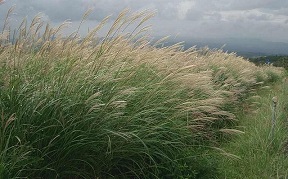The effect of bioenergy on the climate has had its ups and downs in publicity. It was hailed as a solution for climate change at the turn of the century. Fast-growing crops were going to supply us with much energy. Then, bioenergy was fiercely attacked. Proponents had to withdraw. But it is still there, albeit in a more modest form: utilization of forest residues. Have we now left behind us the concept of energy production through fast-growing crops?

Side streams
In the past, we joined the opposition to the idea that energy crops would solve climate issues. Our conclusion: bioenergy is fine, as long as it is produced from side streams like forest residues. It should fit three criteria. We should use biomass primarily for constructing renewable systems, for instance solar and wind energy. The climate effect of biomass use as such appeared to be shaky. Furthermore, we should not use natural resources too fast; they should be able to restore themselves – think ground water, fish, forests. And we should not transgress ecological boundaries, for instance only emit waste water clean enough to allow a healthy life to fish. And we should never forget that per hectare of energy production, direct use of solar energy in solar cells is at least ten times more efficient than biomass production.
This discussion that raged ten years ago, now seems to have moved our way. NNFCC News Review discussed KLIMAHOLZ, a new report by Bioenergy Europe (‘the voice of European bioenergy’ as they call themselves). This report makes a plea for a policy that respects ecological boundaries. Meaning more precisely: energy production through forest residues instead of through the whole crop. Of course, with a much lower yield; but also much more sustainable. The study hasn’t yet been released. But preliminary results show that ‘the utilisation of forest residues for bioenergy will have a positive climate effect until 2050’. These residues would otherwise be left on the ground and decay.

Forest residues
Forest residues, according to the report, include all harvesting residues and natural losses due to mortality, insects, and storms. This low-quality wood is not suitable for other uses in the wood industry. By using these forest residues, Europe would be able to avoid the release of approximately 5,6 billion tons of CO2eq cumulatively from 2020 to 2050. Without damaging biodiversity or forest health. The calculation assumes that we would leave some 10% of forest residues in the woods for decay. Required for a healthy and productive soil in the forests. Such a utilisation of forest residues would make a positive contribution to energy transition, climate protection and biodiversity.
The author of the study, Hubert Röder, says that ‘there is still a big potential in using primary woody biomass for energy. It is mainly a by-product of smart and sustainable forest management, aimed to produce high-quality timber. If the residues are not used they will rot in the forest.’ We could better put them to good use.
Interesting? Then also read:
Energy forests are an illusion
Limits to biomass use
Renewable carbon, the key to a sustainable chemical industry
